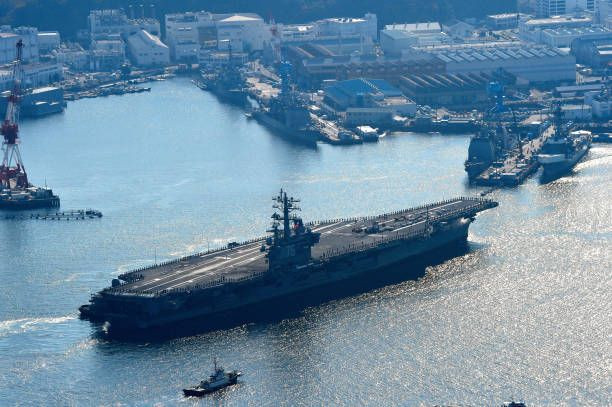Three US Aircraft Carrier Groups Patrol Indo-Pacific In Warning To China

If China’s military leaders think it is a good time to ramp up its aggressive activities because of a United States military weakened by the coronavirus, they may want to rethink their strategies. Three American aircraft carriers patrolling the Indo-Pacific waters are meant to be a clear sign to China that the massive U.S. naval force is fully prepared to respond as needed at any time.
Bonnie Glaser, the director of the China Power Project at the Center for Strategic and International Studies, told the AP as reported in Time, “There have been some indications in Chinese writings that the United States was hit hard by COVID-19, that military preparedness was low, so perhaps there is an effort by the United States to signal China that it should not miscalculate.”
She added. “The Chinese will definitely portray this as an example of U.S. provocations, and as evidence that the U.S. is a source of instability in the region.”
On Thursday, for the first time in almost three years, the three warships were spread out across the Indo-Pacific. The USS Theodore Roosevelt and its strike group are in the Philippine Sea near Guam. The USS Nimitz strike group is in the Pacific off the U.S. West Coast. The USS Ronald Reagan has left port in Japan and is operating in the Philippine Sea south of Tokyo.
Normally, dozens of other Navy ships operate around the Pacific, but the three strike groups add an exclamation to on America’s commitment to the region and its allies.
Rear Admiral Stephen Koehler is the director of operations at Indo-Pacific Command. From his office in Hawaii he spoke to the Associated Press about how China is slowly and methodically building up military outposts in the South China Sea, putting missile and electronic warfare systems on them, some on Chinese-built artificial islands.
He pointed out China’s deployment of aircraft to Fiery Cross Reef in the Spratly Islands where they now operate.
Koehler commented on the three carriers, “The ability to be present in a strong way is part of the competition. And as I always tell my guys here, you’ve got to be present to win when you’re competing. Carriers and carrier strike groups [are large and] phenomenal symbols of American naval power. I really am pretty fired up that we’ve got three of them at the moment.”
The Pentagon's and the U.S. national defense strategy is to treat China as a top security concern. There are efforts to shift more resources and military assets to the region to counter Beijing’s growing economic influence and military might. Koehler added that while the U.S. and other allies and partners in the region have beefed up operations near the human-made islands to try to curb China’s development, none of that has appeared to be effective.
COVID-19 did cause a temporary lapse in U.S military operations but its more long-term effects will be with new procedures that allow the crew to call for medical staff without physically walking to the sickbay. This is aimed at preventing the spread of the virus and will create designated isolation areas onboard the ship. Video messages will be broadcast to highlight safety precautions such as social distancing and wearing personal protective equipment.
Rear Admiral George M. Wikoff said on a call from the USS Ronald Reagan to reporters, “The bottom line is that the mission endures and doesn’t take a break for the virus. “We continue to promote regional security with our partners and maintain a very high state of readiness.”
© Copyright IBTimes 2025. All rights reserved.





















